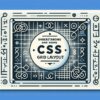HTML Styles: The Role of CSS in Customizing Elements

Hello, fellow coder in the making! Fasten your seatbelt and hoist your sails because we’re about to embark on a wondrous journey into the magical realm of web development. Specifically, we’ll dive into the enchanting world of HTML styles and the key driver behind the customizations you see on your favorite websites – CSS. By the end, you’ll understand what CSS is, why it’s important, and how it plays a role in styling HTML elements. So, perk up and brace yourself for this delightful adventure.
No Mystery Behind the History
Before we begin our noble quest, it’s wise to understand the “why” of CSS. You see, in the olden days of web design (not that old, maybe like 20-ish years), HTML did all the work. Think of it as a one-man band, playing drums, strumming guitars, and blowing trumpets all at once. But, like our poor overworked musician, HTML reached a breaking point. It needed a hand, and that’s where CSS swooped in like the superhero it is (cape not included).
HTML and CSS – A Match Made in Coding Heaven
Think about your favorite burger joint – mouthwatering patty, crunchy lettuce, and that sauce, oh that heavenly sauce. As for winning web design, HTML is your patty, the main course, while CSS is that drool-triggering sauce. It’s the magic ingredient that makes everything look deliciously good.
Suit up! It’s About to Get Stylish
CSS (Cascading Style Sheets) is the most fabulous celebrity stylist your HTML elements can have. It brings the glamour to your webpage, styling everything from colors and fonts to layouts, making every pixel dance to its beat.
_into the heart of CSS codes_
Oh, don’t be startled. We’ve now ventured into the territory of actual code! Now, see how we’ve been describing CSS this whole time as a kind of sorcerer? Well, here’s a sweet trick up its sleeve.
H2 {
transform: rotate(360deg);
color: #FF6347;
font-style: bold;
}
These are the magical spells CSS uses to weave its styling wand around your elements. It’s telling our HTML that all H2 headings must be bold, in a tomato hue, and they do a full spin before an eager audience’s eyes.
Bringing it Home – Answering the HTML Call for Style
Well, that was a lovely stroll, wasn’t it? CSS, with all its stylistic might, took the weight off HTML’s shoulders, allowing your page’s structure (HTML) and style (CSS) to work harmoniously together.
But here’s a final piece of wisdom from this ancient coding wizard: my dear ones, learn CSS and HTML like the back of your hand, for together they are the power-dynamic-duo that makes the web not just functional but beautiful, like a unicorn frolicking in a sky full of rainbows. Or at least, not as dull as watching paint dry.
Alright, apprentice coders, that concludes our whirlwind tour of HTML styles and the role of CSS in customizing elements. Buckle up, because, in the next chapter, we’re taking on the beast named JavaScript. No need to fear, though — it’s more like a pet hamster than a dragon. Until then, keep your coding hats on and fingers ready for some magic on your keyboards!


